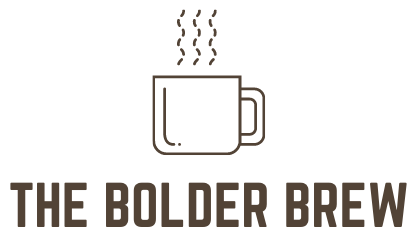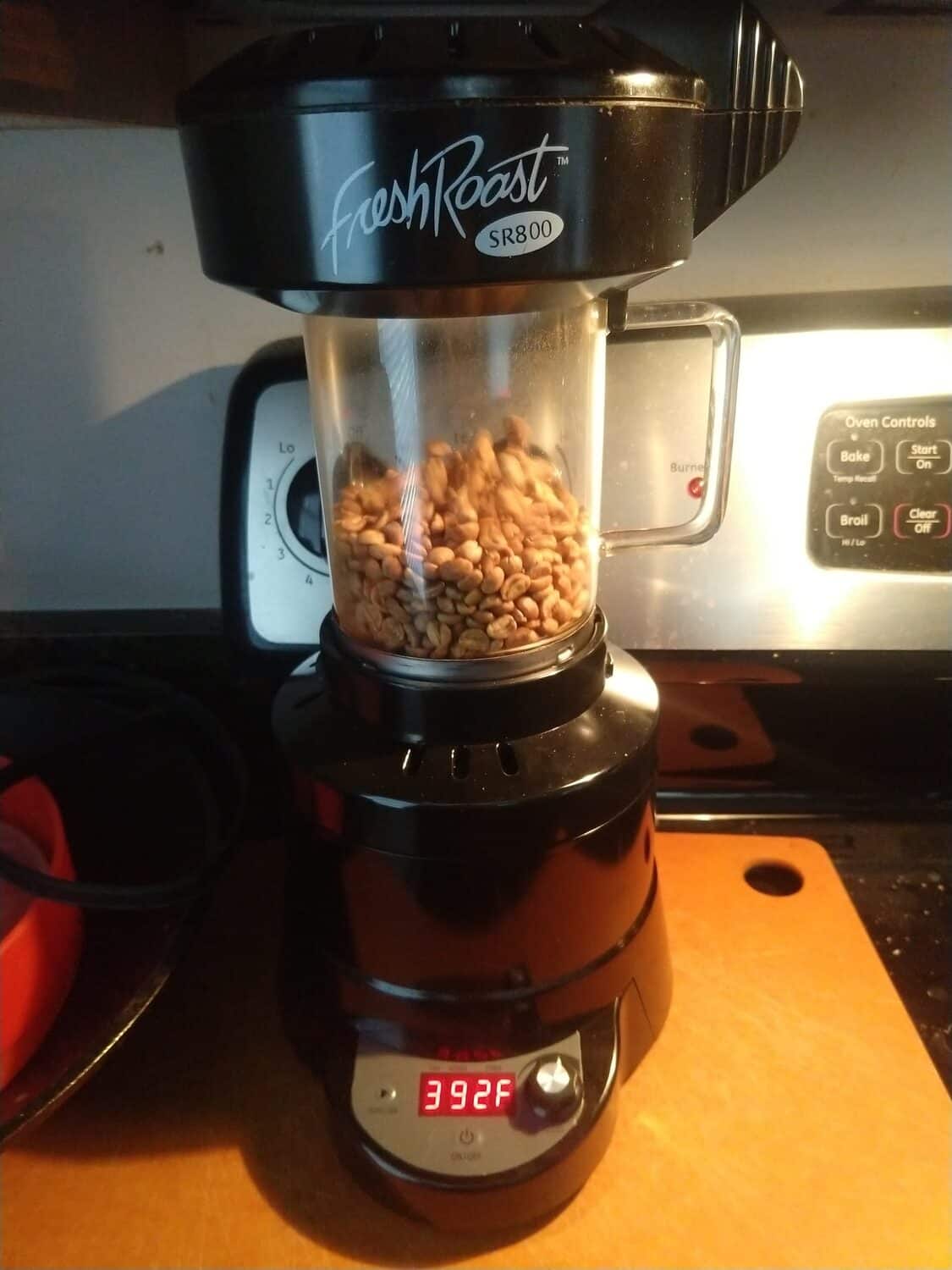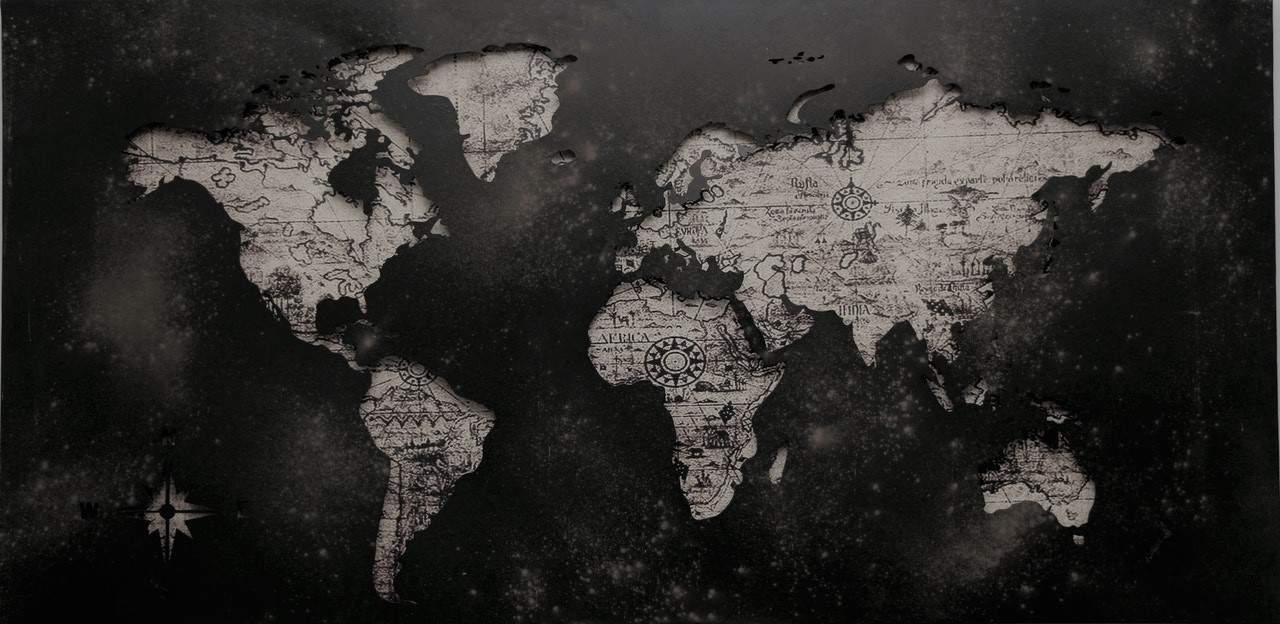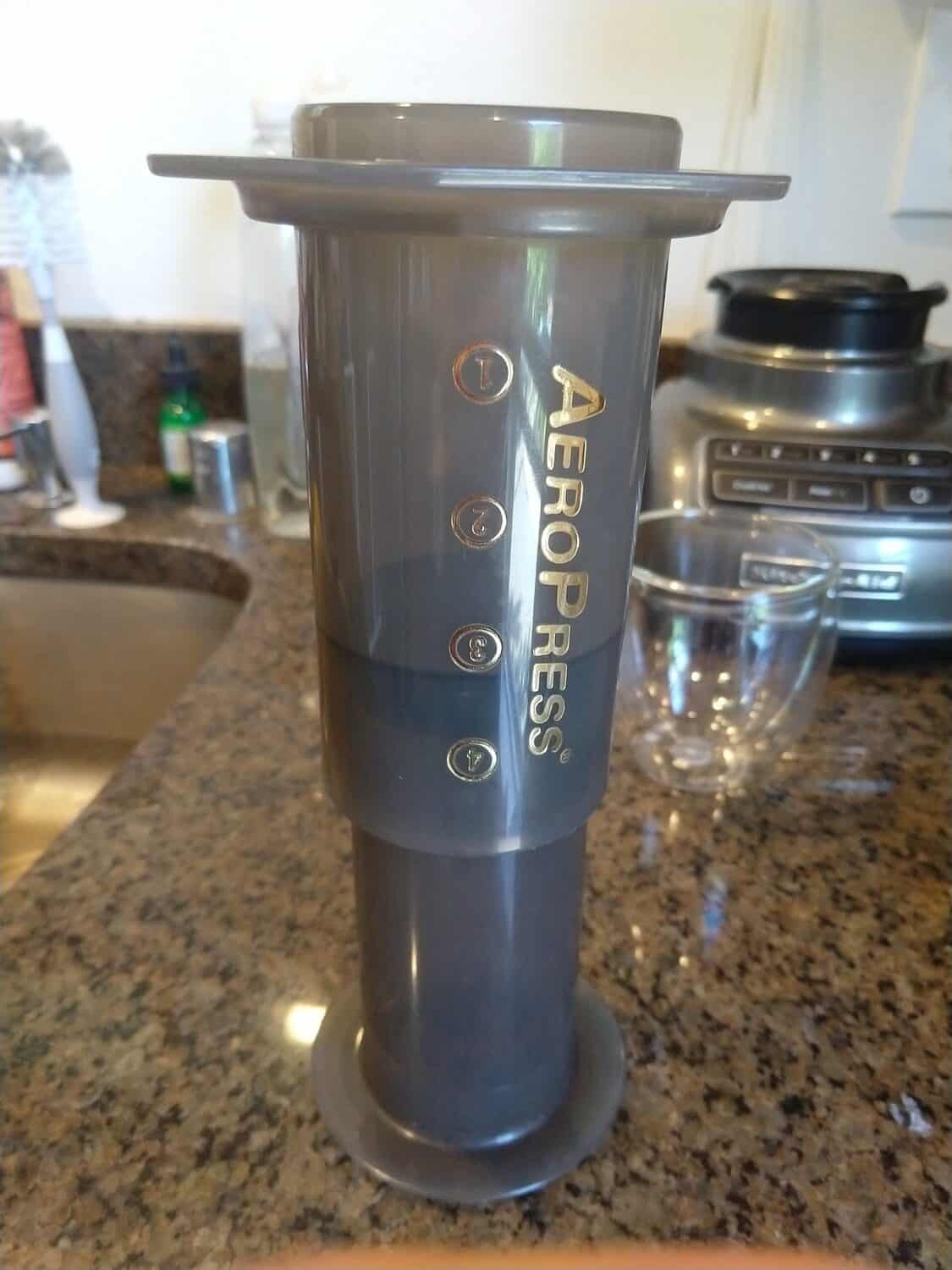How To Choose A Coffee Grinder You'll Love (Tips, Terms & Suggested Models)
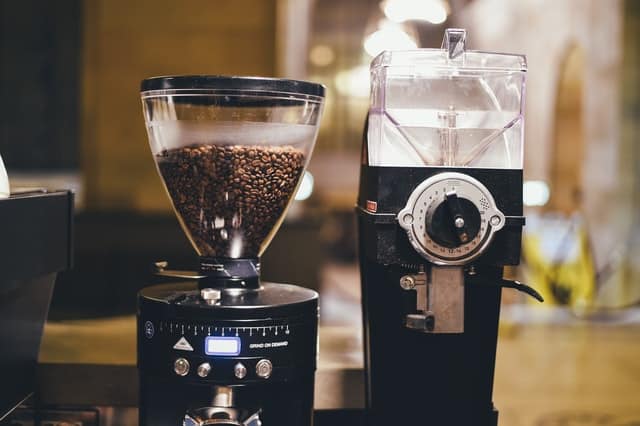
Your grinder will affect the quality of each cup more than anything besides the beans themselves.
Brewing devices, storage canisters, kettle choice, and whatnot are all important and worth spending (some) money on.
But they don't have the same game-changing impact as a good grinder.
To be fair, any fresh grind with a halfway-decent grinder will taste better than stale, pre-ground coffee.
But I suspect you're aiming higher than halfway-decent…hence this guide!
And that leads us to the crux of grinder choice: what's the most cost-effective way to get consistent and even results at the grind size(s) you use?
By the end, you'll understand the major features and trade-offs, how to weigh them, and even a few proven models to consider—some of which I've personally used for hundreds (thousands?) of cups.
Choosing a grinder (in a nutshell)
Before we jump into details, here's the quick version.
Buy a standalone grinder, not a coffee maker with a grinder built in. Some are in fact decent, but they're not easy to use with other brewing methods. If you consider yourself the slightest bit of a coffee enthusiast, who might ever want to experiment, then a separate grinder will be more enjoyable.
Avoid blade grinders. They make it hard to get consistent results, and even harder to replicate those results.
Manual grinders are the best value (but slower), so I strongly recommend them if you're grinding coffee for 1-2 people. They're also perfect for travel, camping, etc. Some of the best available cost less than even mid-range electric grinders. They're slower and ill-suited to more than a couple ounces at a time, but they're also quiet and portable.
Good burrs are expensive, but none are categorically better than others, so don't get hung up on the details. Some are optimized for espresso, but most are good all around.
Look for micro-adjustment if you'll make lots of espresso with a non-pressurized portafilter. On manual grinders, this means either extremely small "clicks" or a stepless mechanics. On electric ones, this often involves a secondary micro-adjuster.
The cheapest manual and electric grinders worth buying are $80-$120 and $150-$200, respectively. Yes, you can spend far less, but consistency and adjustment will noticeably suffer.
This might be a little overwhelming. We'll take a look at why your grinder is even worth this much thought, then break down all these tips and terms.
Why grinders matter even more than you'd think
All the tasty substances in coffee are distributed inside each bean. Grinding the beans exposes their contents to water, which makes extraction possible.
When they're ground well, all the particles are about the same size and shape. That means similar surface area, similar extraction, and similar contribution of flavor.
But when they're not ground well, some tiny pieces ("fines") get over-extracted and contribute harsh flavors. Other large pieces ("boulders") stay under-extracted and contribute a dull, muddy, or even slightly sour flavor.
In addition, grind size affects how quickly water passes through. This means more or less time in contact with water, which magnifies any over- or under-extraction.
Consider a manual grinder
Manual (hand) coffee grinders are a far better value for home use. Unless you're grinding several ounces per day, it's not worth spending more for an electric grinder of similar quality.
Besides, manual ones are tiny, portable, and quiet!
Hand grinders are nothing new, but connoisseur-quality ones just became common in the last several years.
And that's great news, since manual grinders give more grind quality per dollar.
No electronics means better burrs at the same price, or similar ones at a lower price. Very roughly, you might pay 30-50% less for similar grind quality.
(Incidentally, manual grinders always use burrs. A blade needs such high RPM that a motor is the only choice.)
The obvious catch is they're slower.
You can reasonably expect 2x the grinding time for a filter setting and at least 4x for an espresso setting. Low-end models, with small burrs and less-than-thoughtful hopper design, can take even longer.
Larger burr diameter will reduce grinding time but raise the price. But if you plan to make large amounts of espresso every day, then it's probably money well spent..
But manual is a better deal if you a) don't mind applying some elbow grease and b) usually brew just a few servings at a time.
They're also ideal on the road, or if an electric grinder would wake the rest of your house up.
Choose burrs over blades
Modern coffee grinders use one of two mechanisms:
Blade grinders chop the beans into ever finer bits, much like a food processor.
That's not an exact science, so they're cheap to make. Unfortunately, the lack of precision is their downfall. They vary within batches, meaning lots of fines and boulders. They also vary between batches, meaning it's hard to get the same results twice in a row.
If a blade grinder is your only option, then stick with French press or AeroPress brewing, where you—not the grind size—determine brewing time.
You'll also get significantly better results with these hacks, which range from straightforward to a bit neurotic:
Burr grinders crush the beans, like a mill or a mortar and pestle.
They actually contain a pair of burrs—inner and outer—which the beans pass between. You fine-tune the grinder with a dial-like adjuster, which increases or decreases the gap between the burrs, down to a fraction of a millimeter.
You can't perfectly control the physics of how each bean shatters under pressure, but precise burr adjustment goes a long way.
Today, all coffee enthusiasts prefer burrs and all quality grinders use burrs.
Steel burrs are good (but not essential)
Burrs are either steel or ceramic. It's generally accepted that steel burrs stay sharper, longer, but I can't personally say for sure.
In practice, it's a bit moot for manual grinders. Virtually all high-end models (i.e., around $80 and up) use metal burrs. Ceramic ones are generally left to cheaper hand grinders whose poor alignment and unstable axle/bearings keep even mediocre burrs from working to their full potential.
It's a little more complex for electric grinders. Metal burrs still seem to predominate on the high end, but many do use ceramic burrs to minimize heat transfer high-volume commercial use. That's not a big factor in home use; it's just worth noting that ceramic burrs are not at all a red flag on premium electric grinder. Quite the opposite.
Flat vs. conical burrs
Since your grinder will almost certainly have steel burrs, the other burr consideration is conical versus flat.
Conical ones fit together like, well, cones. Adjusting the lower cone (inner burr) pulls it up or down, which changes the horizontal distance to the outer burr.
This is a nice, compact design that virtually every hand grinder uses.
Flat burrs show up on larger-capacity electric grinders (and this really expensive manual one). They're arguably quicker and more consistent, but that's highly debatable, and they sure don't come cheap.
As grinder manufacturer Baratza points out, "the taste difference between flat and conical burr sets is so small it’s hard to notice without taking into consideration all other factors."
Neither type of burr is categorically better. Moreover, there's a ton of variation within each type, so across-the-board comparisons don't make much sense in the first place.
Besides, even the exact same bean at two different roast levels may fare better in different grinders. Roast level affects the bean's brittleness and density, and those affect how it breaks apart under pressure from different angles.
Long story short, "optimal" burrs are relative. Hunting for them will lead you down a deep rabbit hole, so I recommend simply buying something good and getting on with it!
Wide burrs help, but don't sweat it
Larger burrs grind more coffee with each revolution. After all, there's more surface area in action. That means less work and less time to grind your usual amount of beans.
It doesn't matter much for electric grinders, since the motor is doing the work. But for manual grinders, it's nice to speed things up.
How much of a difference can it make?
As an arbitrary example, I currently have two high-end hand grinders. One has 38mm burrs and the other has 48mm burrs, both conical and steel.
Sure enough, the latter is about 30% faster for the same beans at typical pour-over fineness. It's probably 60% faster at espresso size.
In fact, it's nearly as quick as my old electric grinder with 40mm burrs…at least for a single serving, before I get tired.
And that's nice. I truly appreciate the speed, especially for espresso.
But don't sacrifice grind quality just for the sake of buying wider burrs. A better cup is worth another 10-30 seconds of effort.
Burr design also plays a role, so going wider still doesn't guarantee significantly faster grinding.
Unless you always brew a few cups in a row, burr width (and speed) shouldn't be a major factor in your choice.
Don't worry (much) about maintenance
Care and maintenance shouldn't be a deciding factor.
Blade grinders require essentially none. If they're clean, or clean-ish, then you're good to go.
Someday, grind quality might deteriorate enough to justify a replacement blade from the manufacturer. Fortunately, most are cheap and easy to replace.
Burr grinders need a little more looking-after, but it's not complicated.
Brush it out every couple days, and run cleaning tablets through it (I use Urnex) every 50-100 batches. Don't tell the Specialty Coffee Police, but less often is still fine.
Admittedly, burrs are trickier and more expensive to replace when they finally go dull.
It's hard to predict their lifespan, but suffice to say it's long.
All my grinders are going strong on the original burrs after 2+ years of daily personal use. (Naturally, it's much shorter in a high-volume coffee shop scenario.)
Will you brew espresso or Turkish?
Most burr grinders can produce everything from fine espresso to large, almost chip-like French press grinds.
If you're grinding coarser than espresso, then almost any burr grinder will suffice. We coffee snobs may debate whose burrs bring out more acidity in V60 versus Chemex grind settings (why yes, we are fun at parties!) but that's splitting hairs.
If it's not espresso, then no worries: simply decide based on price, capacity, speed, or whatever else you care most about.
Espresso calls for finer adjustment
If you will brew espresso, then the main criterion is extremely small steps between grind size settings.
In other words, each click of the adjuster needs to change the gap between the burrs by just a hair—literally.
Espresso isn't as fine as Turkish—more on that in a minute—but it's fine enough that shot quality changes when grind varies by even 50 microns (as in 50 thousandths of a millimeter!).
That wouldn't make a difference with pour-overs.
Some espresso-oriented grinders even have stepless adjustment—basically a threaded system—that provides infinite range between its finest and coarsest limits.
(I find clicks simpler and more replicable, but to each his own.)
Finally, super-precise adjustment is less important for espresso machines with a pressurized portafilter.
Not only do they take coarser grinds in general, but grind size impacts them a bit less, in my experience.
So, if you'll only use a pressurized basket for espresso, then any good grinder should suffice.
What about Turkish coffee?
Turkish coffee is a bit of a different animal.
It's boiled, not filtered in any way, so it uses a power-like grind that's even finer than espresso.
Most grinders are capable of producing Turkish coffee. There's no pressure or filtering, so you don't need ultra-fine adjustment to "dial in" the grind.
And since precise adjustment doesn't matter much, a grinder that's not great for espresso can still work for Turkish.
As long as there's at least one setting that resembles flour, you're all set.
Just set it a couple clicks out from the burrs touching (never grind with burrs touching!), then back it out to the finest setting that isn't too painfully slow.
You'll quickly find that the limiting factor in grinding Turkish coffee is patience, not equipment.
If you just can't find a decent setting for Turkish, then you can buy a cheap, traditional one just for that purpose. They're a bit rare in stores but readily available online. For example, this one on Amazon is nearly identical to one I got from a Middle Eastern shop many years ago.
How much does a good coffee grinder cost?
Manual grinders worth buying start around $80. Simple but good electric grinders start around $150 for filter-only or $300 for espresso.
Higher prices usually mean better grind quality, adjustment, and/or usability. However, you'll find diminishing returns on hand grinders above $250-$300 or electric grinders above $600-$800, give or take.
We'll look at some representative examples below.
Please use them as reasonable suggestions, not an exhaustive guide!
I'm confident that you won't go wrong with any. Still, there are dozens of others worth exploring. None substantially better, but perhaps subtly different in ways you'd appreciate.
Manual grinder price ranges
Worthwhile models range from about $80 to over $400. It's possible to spend much less or (believe it or not) even more.
Cheaper ones tend to give poor and inconsistent grind quality, especially at the medium to coarse settings used for filter and French press brewing.
Ultra-expensive ones certainly don't disappoint on quality, but I'm not convinced they're meaningfully different from their less lavish peers.
Hand grinders have evolved quickly and exploded in popularity over the last few years. There were only a few good options a decade ago, but we're now spoiled for choice.
For instance, my old $30 Hario Slim Mill was a huge step up from stale, pre-ground coffee. But when I upgraded from that, to a predecessor of the Timemore C2, my pour-overs were immediately more balanced and complex.
(For the curious, mine is a Timemost Chestnut G1, reviewed here in full. It's still available, but the C2 is functionally similar at a lower price.)
If you're starting with a low-end grinder or none at all, then choose a manual grinder in the $80-$120 price range.
That price will get you a sharper, steel burr; rock-solid assembly free from wobbles. That's basically the formula for a consistent grind! (And it'll look and feel better in your hand, too.)
The next tier is around $150-$250, where we start throwing around words like "premium."
Comandante is the default choice here, and it's unequivocally good. I'd submit that 1Zpresso's JX Pro and espresso-friendly K-Plus are the best values around, but some may disagree.
You'll find a game-changing difference between the $30 and $80-$100 price point, and only moderate grind improvements but nice design/usability features around $150-$250. I believe returns diminish past $250-$300; they might cater to more specific uses or design preferences, but probably won't provide objectively better grinding.
Plan on spending $150-$250 if you make a lot of espresso with a standard, non-pressurized portafilter. As of writing, less expensive grinders don't adjust finely enough, or are frustratingly slow at espresso settings.
Electric grinder price ranges
Worthwhile models begin in the ballpark of $150 and can easily exceed $1000. As with hand grinders, electric ones do exist far above and below that range.
The cheapest are blade grinders (best avoided, as discussed earlier), or low-end burr models that sacrifice burr quality to offset the cost of the electronics. The costliest have high throughput and extra-robust electronics that are better suited for commercial use, but overkill at home.
At approximately $170, the Baratza Encore remains arguably the best value for non-espresso brewing.
It's stripped down to the essentials—that means no timers or screens or Bluetooth fanciness—so your money buys a great combination of consistency and mechanical durability. I did not experience a single issue in years of daily use.
That means you can get a good all-around grinder for under $200. Start there, unless you'll primarily make espresso and/or grind several ounces per day.
The next major jump in quality is around the $300-$400 tier, where we find mid-tier models like the Fellow Ode (for brewed coffee) and Rancilio Rocky (more espresso-friendly)
You can expect faster and quieter grinding, finer adjustment, more consistency at coarse settings, and even fancy timers and espresso dosers.
This $300-$400 range is best for most espresso fans, or for anyone who grinds many servings' worth every day. They're also nice if you simply don't mind spending a little extra for more stylish design and quieter operation.
Doubling the price again, to the $600-$900 range, we find higher-tech grinders like the Eureka Mignon Specialita, or Baratza's Sette 270Wi and Forte BG. You'll see incredibly precise weight-based dosing, some sort of digital controls (including an LCD screen on the Forte!), and commercial-grade motors. It's likely overkill for the home, but I do find them fun to use! So, if your budget permits…
Believe it or not, it's possible to spend several times that much again. A Mahlkonig EK43, for instance, is closer to three grand!
Wrap-up: choosing the right coffee grinder
Picking a grinder might involve a little more than you thought!
If it all seems overwhelming, the good news is you can safely ignore the details by focusing on a few main things:
Plan on spending at least $80-120 for a hand grinder or $150-$200 for an electric one.
Up to $250-$300 (manual) or $600-$800 (electric) generally buys better quality, but the differences are incremental. They're not be a game-changer, like it is when you upgrade from a department-store grinder to a basic but premium one.
If you often make espresso using a non-pressurized portafilter, then buy an espresso-friendly model.
Otherwise, virtually anything in the above price ranges will do a great job, so it comes down to look and feel (and automated conveniences, for electric grinders).
Part of the fun of making coffee is learning how different gear affects the result. It's easy to sink ridiculous amounts of time and money into that pursuit, but you don't have to.
A good grinder is relatively easy to find, will improve your brews immediately, and should offer years of trouble-free service.
